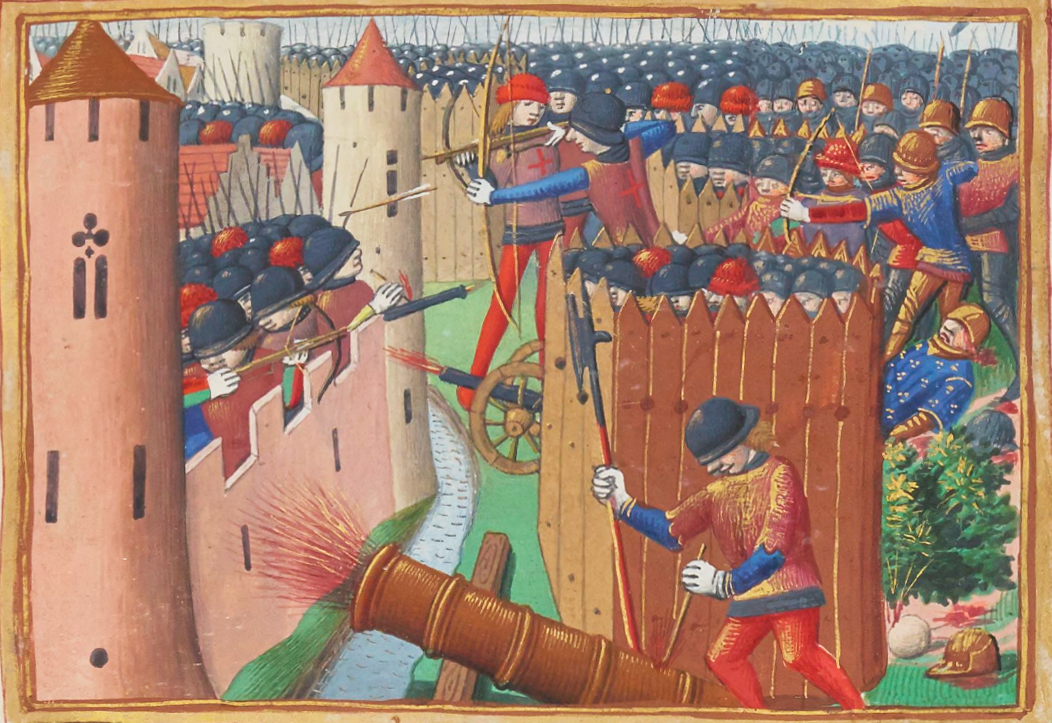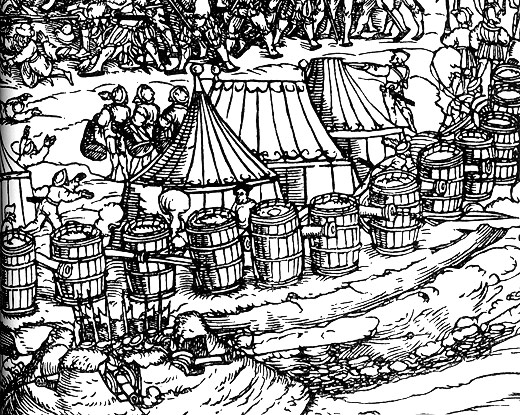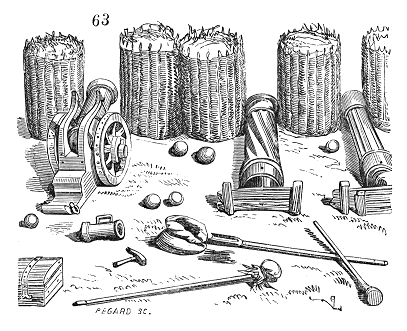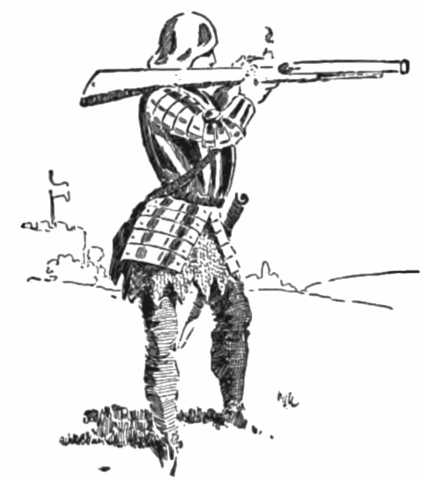Dueling in a roleplaying game usually feels like it will be more tedious than it’s worth implementing. Cavegirl Games wrote some dueling rules in this post using their own simplified dueling rules rooted in their experiences with LARPing and reenactment. While these rules are interesting, I find these rules finicky for my needs when playing OSR games. However the author’s attempt to create something unique and lightweight is worth noting. I really like this idea conceptually, but it stills feels somewhat clunky and lacks a sense of suspense that should come from dueling with someone since dueling is inherently risky to do.
The author used a simple idea of using a triangular progression game like rock-paper-scissors as Push, parry, and feint to represent what action beats what action which is a fun idea. However I’m not a fan of these actions to provide a bonus to AC, Damage, or to hit. I understand that his helps tie into more traditional game combat, but then I don’t fully understand the point of having special rules if I’m still rolling to-hit and adding a number to a total. It also feels a bit arbitrary since there still leaving the game to blind chance so the strategy implied is just a bonus to increasing favorable odds. To me, OSR gameplay is about risk-reward of player’s decision. If the duel turns into just dice rolling with a +3 or AC with +3 for round after round, it can become a slog and doesn’t succeed at emulating the tenseness of a duel. I’m more into recreating a duel from something like Ridley Scott’s “The Duelists” and less into recreating the fight seen from They Live. If a player is going to engage in a duel instead of normal combat then it should have some strongly considered consequence for engaging in a duel, such as making it more risky to engage in. As an avid fencer of both modern and historical weapons (epee and longsword, respectively) with knowledge of fencing concepts and application, I’m going to tie the idea to a game able concept rooted in something from fencing pedagogy; The Tactical Wheel:This represents a simplified modern fencing tactical wheel. The higher action on the tactical wheel beats the prior action. Once you get to the Counter-time action, a direct action will beat it and the whole cycle begins again. It isn’t unlike something like rock-paper-scissors in a sense, but obviously fencing is far more dynamic and is structured around setting up actions to hit your opponent and is less of a random chance. I also assigned numbers to the actions, giving us a range of 1-4 to further help with remembering the sequence. Finally, I’m basing my dueling rules on unarmored duels between two individuals. With that said, the following are the Dueling rules for my OSR games:
The Duel: Using combat rounds, each opponent selects their action secretly by either writing down their action or rotating a d4 to represent the desired number behind a screen (or hand). Then the selection of both opponents is revealed simultaneously. If someone chooses a number one step above their opponents, then they roll damage. Any selection that is two numbers higher results in a miss. Any identical selections results in both opponents hitting each other simultaneously. Once the round is finished, start the sequence over again until the duel is resolved to the desired outcome.
Two caveats for these rules:
- The Number that wins must be the next number, which means a 2 beats 1, 3 beats 2, 4 beats 3, and 1 beats 4. If someone selected a 3 and the opponent selected 1, then the resolution is no one was hit. Why? Because I see this as a failed set up for their action*. I want there to be an option to just MISS the target instead of someone is always getting hit with each duel round. This builds tension as well.
- If both opponents select the same action then they both deal damage to each other. Why? Well, when two fencers do the same action against each other, it usually results in both people getting hit. If both combatants do a direct attack at the same time, they both will hit each other. You prevent this by parrying their attack. Normal D&D combat represents this with successful hits from both sides in a combat round, so it should also mechanically be an option when dueling.
The range is much smaller than rolling a d20, with a 1-in-4 chance of hitting, getting hit, doubling, or missing and there isn’t anything that will help the player’s odds to get an advantage unless the referee include it. So summarize: there is a 50% chance of the duelist taking damage when dueling, 25% of hitting but not getting hit, and a 25% chance of no one getting hit per round. Again, dueling is RISKY. You might still feel like this is still up to random chance, and you’re not entirely wrong. However, you as a player can attempt to read the poker face of the referee who is playing your opponent OR the other player (if you’re into PVP) and try to discern their thoughts if they are keeping a poker face. You can potentially psych the other opponent out and make them yield, or maybe you will yield instead as you see the duel working against you. You’re both taking a risk engaging in a duel, and there will always be the chance of harm when engaging in any fight. This is why Duels would normally be prevented, even up to the moment of a duel where there might be a last minute settlement that was negotiated.
Players should role play the negations of the terms of the duel. Most scenarios for minor offenses would be to first blood drawn or a couple of exchanges, but more egregious actions will demand more consequential results. The negotiations can include what’s at stake, what would be deemed a win condition, what weapons are used (if any), when and where the duel will take place. Duels can be legal or illegal depending on the location or context of the duel as well so the referee should consider the implications of doing a duel within their campaign.
Notes:
- Numbering the different actions in order allows us to instead roll a d4 if we feel like allowing elements of chance to happen, or to create a more “neutral” way to have a referee play as an NPC. However the rules are focused on both parties selecting a number each round to allow for a more mental game of psyching out each other instead of it devolving into disconnect dice rolls. The idea of selecting a desired action allows the player to feel more invested in the fight and allows THEM to read their opponent, whether it be the referee or another player in real time as state earlier. With that said, Rolling can be fun as well and has its place if the player really feels like flexing some bravado, then they can certainly roll sometimes although that is inherently risky. Only rolling defeats the goal of these rules.
- Natural healing in OSR games is SLOW and having dueling rules where there’s a high chance of direct damage being rolled should make players consider the risks of engaging in such activity. There is less in place to protect you from harm.
- This method also allows to use the variable weapon damage dice rolls with more purpose. Dueling with polearms seems more risky than dueling with short swords! Dueling with asymmetrical weapon pairings can make things extremely dangerous
- If you’re a high level fighter, you might think that you’re missing out on your probably better to-hit number as a fighter with a higher class level than the person your dueling. However, this is where your hit die determined hit points will really stand out. You being able to take more “hits” represents your superior defensive actions preventing serious wounds and higher endurance to keep fighting. But there is still that chance that a 2HD NPC fighter with 10 hit points could defeat your 5th level fighter with 25 hit points!
- You can also use this to simulate a boxing match or tavern fight, just use unarmed damage and make it non-lethal. First people to 0hp is knocked-out.
- On the same note; if a player wants to flip a table, grapple or knock over an opponent in a duel, it counts as a Direct Action. The results of a successful action is up to the referee.
- There a lot of roleplaying potential within here, with players narrating what they are doing and saying to their opponent. Referees might even allow a player to “tick” their number up or down one step after revealing their actions based on what they are doing within the context of the duel, such as fighting from higher ground. Or have an option to roll a d4 and have to take the new result. Ultimately, it’s up to the referee!
The tactics chosen each round implies the player’s footwork, blade position, etc. that is assumed with traditional D&D combat in the form of AC and To Hit number, but removing many of the variables that would happen in most combat scenarios involving groups of people or fighting in a variety environments. A referee might start allowing the player to notice trends in the fight, such as how their opponent moves before doing a specific action. This could allow the referee to drop hints, such as “your opponent is moving their blade the same way they last time they did a parry” to allow the player an increased chance of success. This is of course optional but allows for a more narrative guide for more informed decision making with the game mechanic. If a referee wants to include environmental factors; like jumping onto a table or kicking over a stool as an action; they can use this as a way to prevent their opponent from selecting one of the four options or even do their full weapon damage on a successful hit at the cost of the player losing one of the 4 options on the next round at the referee’s discretion.
 |
| Duel between a Man and a Woman |
Dueling context: Dueling usually represents unarmored combat meant to be done until reaching an agreed upon outcome. Duels are used to resolve an otherwise unsolvable conflict between two individuals. A duel can be denied outright, since they are optional and potentially not worth the risk. However, a referee might give the challenge some mechanical weight such as denying a duel would decrease the morale of henchmen. Dueling could be used as a way to decrease the cost of someone’s service “if you best me in a boxing match, I’ll only charge you half since you’re so tough” or as a way to proves one’s might when trying to hire a henchman. Duels can have a judicial basis as well with the court ordering the terms of the duel, which could lead to interesting implications within a campaign. Keep in mind, duels to the death are EXTREMELY risky, and oftentimes people would just duel until blood is drawn without the intent to truly maim someone. Late medieval and early modern Europe had all kinds of laws governing (or banning) reckless dueling because it was so dangerous and never worth it. With that said, you can choose to duel until someone is hit, or until someone is worn down to half their health and make a morale roll to see if they yield. Duels can be secret, or public event that draws crowds. Other party members could use this as an opportunity to gain more gold by picking pockets, setting up bets, requesting tithes from onlookers for the souls of the fighters, or general charging admission to a fight much like a pay-per-view match. Duels can also be done in a non-lethal capacity to emulate friendly fencing. Any successful hits just aren’t counted against their hit points and are thus not rolled for damage. But you can keep track of “points” this way if they are engaging in a competitive game. Just something to consider!
Optional Variation: Even though I originally wrote my dueling rules as representing unarmored duels, they CAN (and did) include wearing armor sometimes. However, if both opponents are wearing plate armor, then in my mind it sort of negates the advantage one might have against the other, allowing you to still use the rules I came up with to emulate dueling in armor with polehammers. If you REALLY want to include an attack roll and want to factor in armor being worn, then you could use the following modifications:
Both opponents still secretly select your chosen action on a range from 1-4 by rotating a d4 or writing it down. They will also be revealed simultaneously. Then both opponents will roll to hit simultaneously, depending on the results of the selections.
1) Direct attacks you roll normal to hit, and prevents a counter-time action being rolled
2) A parry is rolled to CANCEL out their opponents attack roll and if they succeed then you roll to hit as the riposte with a +4 bonus to hit. If the parry misses, you don’t roll the riposte
3) A feint is rolled normal with a -4 to hit but if it’s parried you roll to hit again with a +4 bonus to hit and prevent the riposte being rolled.
4) A counter-time action prevents a Feint being rolled
Any hits are then rolled for damage and the sequence begins again. If both opponents select the same action, then they both roll one to-hit roll simultaneously without any additional modifications.
The above rule modification isn’t ideal for most dueling and defeats the point of dueling being tense and scary but it could have its place in your game such as doing a tourney with armor and heavy weapons. If players are looking for something with more nitty-gritty mechanics you honestly cannot do better than the Man-to-Man combat rules in Chainmail. But for something more seat-of-the-pants dueling with tension I feel like my original take on dueling rules is a good emulation of a gameable way to include duels in an OSR game.
References for images taken from here
Fencer end notes: You might be asking yourself “what the heck do these terms mean?” Lemme explain
- Direct Attack: a simple, single attack like a cut or thrust with your weapon with intent to hit.
- Parry and riposte: A parry stops a direct attack from your opponent, giving you a chance to attack back (riposte) safely while your opponent’s weapon isn’t a threat to you.
- Compound Attack: Feints and similar actions that set up your opponent to waste their attempt to parry your weapon so you can strike in an opening made while they attempt to parry or perform another action.
- Counter-time Action: Counterattacks and similar actions that attack directly into an opponent’s attack or set up to hit first. This can also include more complex counter-time actions that can counter a counterattack. However, I’m grouping any attack against a threat that can stop the opponent’s actions or interrupt them as a counter-time action for the sake of the game. These higher concept tactics can be defeated with a simple, direct attack used to interrupt them.
Normally, the tactical wheel has 6 or 7 parts to it, but I lumped everything into these more simplified tactical wheel. It’s worth stating that the dueling rules here fail to capture the real intention of fencing and feeling out your opponent behavior by reading their body language and seeing their trends due to how RPGs primarily exist in our imaginations. This is where the referee’s narration can help. The mental game of fencing will still be somewhat emulated here by trying to psych out your players when you are dueling them.
* For example: if you attempt to counterattack someone who is planning on parrying, then you end up doing a direct attack that they are expecting anyway. If you do a direct attack and disengage when they attempt to parry, then you technically did a feint.























